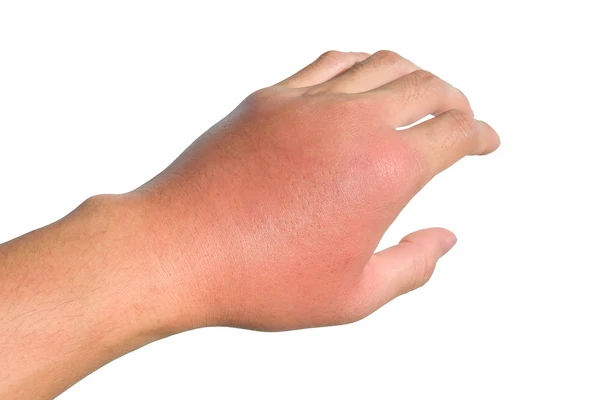At-Home Testosterone Testing Guide
Curious about your testosterone levels? Learn how at-home testosterone testing works, what results mean, and when to consult a doctor.

Written by Dr. Rohinipriyanka Pondugula
Reviewed by Dr. J T Hema Pratima MBBS
Last updated on 25th Aug, 2025

Testosterone is a vital hormone in both men and women, though it is more commonly associated with male health. It plays a crucial role in muscle mass, bone strength, energy levels, mood, and sexual function. If you suspect low testosterone (also called "low T"), an at-home testosterone test can be a convenient first step to check your levels without visiting a clinic.
This guide will help you understand how at-home testosterone testing works, when to consider it, and what steps to take next.
What Is an At-Home Testosterone Test?
An at-home testosterone test is a simple and private way to measure your testosterone levels using a saliva, blood (finger prick), or urine sample. These kits are designed for easy use—you collect the sample at home, send it to a lab, and receive your results online or via a healthcare provider.
Types of At-Home Testosterone Tests
1. Saliva Test: Measures free testosterone (the active form of the hormone).
2. Blood Spot Test: Uses a finger-prick blood sample to check total and free testosterone.
3. Urine Test: Assesses testosterone metabolites over 24 hours.
Most kits measure total testosterone, but some also check free testosterone, which is the unbound, active form in your body.
Consult Top Specialists
Who Should Consider an At-Home Testosterone Test?
You might want to check your testosterone levels if you experience symptoms of low testosterone (Low T), such as:
Common Symptoms of Low Testosterone
Low energy & fatigue
Reduced muscle mass & strength
Weight gain (especially belly fat)
Low sex drive (libido)
Erectile dysfunction (in men)
Mood swings, irritability, or depression
Difficulty concentrating ("brain fog")
Thinning hair or slow beard growth
Women with high testosterone may also experience:
Excess facial/body hair
Acne or oily skin
Irregular periods
If you notice these symptoms, an at-home test can help determine if testosterone imbalance is the cause.
Get Testosterone Test Here
How to Use an At-Home Testosterone Test Kit
1. Order a Test Kit: Choose a reliable brand (Apollo24|7 offers trusted options).
2. Follow Instructions: Most tests require a saliva swab, finger-prick blood, or urine sample.
3. Mail Your Sample: Send it to the lab using the prepaid package.
4. Get Results: Typically within a few days via a secure online portal.
Pro Tip: Testosterone levels are highest in the morning, so take the test between 7 AM to 10 AM for the most accurate results.
Understanding Your Testosterone Test Results
Testosterone levels vary by age and gender. Here’s a general reference:
Normal Testosterone Ranges
| Group | Total Testosterone (ng/dL) | Free Testosterone (pg/mL) |
| Adult Men | 300 – 1,000 | 9 – 30 |
| Adult Women | 15 – 70 | 0.3 – 1.9 |
Low Testosterone (Hypogonadism): Below 300 ng/dL in men may require medical evaluation.
High Testosterone (Hyperandrogenism): Can indicate PCOS (in women) or steroid use.
If your results are abnormal, consult a doctor for further testing (like a blood draw at a lab) and personalised advice.
What Affects Testosterone Levels?
Several factors can lower or raise testosterone naturally:
Lifestyle Factors That Lower Testosterone
Poor sleep (less than 6-7 hours/night)
Chronic stress (raises cortisol, which blocks testosterone)
Obesity & unhealthy diet (high sugar, processed foods)
Lack of exercise (especially strength training)
Alcohol & smoking
Natural Ways to Boost Testosterone
Strength training & HIIT workouts
Balanced diet (healthy fats, zinc, vitamin D)
Quality sleep (7-9 hours nightly)
Stress management (meditation, yoga)
Limiting alcohol & quitting smoking
When to See a Doctor?
An at-home test is a good starting point, but if your results show low or high testosterone, consult a doctor for:
Confirmatory blood tests
Hormone therapy (if needed)
Underlying condition checks (e.g., thyroid issues, diabetes)
Apollo24|7 offers expert consultations if you need guidance on your results or treatment options.
Conclusion
An at-home testosterone test is a convenient way to check your hormone levels if you’re experiencing symptoms of imbalance. While lifestyle changes can help, persistent issues should be discussed with a doctor.
Want to check your testosterone levels?
Get Testosterone Test Here
Taking control of your health starts with understanding your body. If you suspect a hormone imbalance, don’t wait—test, track, and take action!
Would you like help choosing the right test?
Consult Top Specialists
Consult Top Specialists

Dr. Syed Ismail Ali
General Practitioner
7 Years • MBBS
Hyderabad
Apollo 24|7 Clinic, Hyderabad

Dr. Mohamed Azeem
General Physician/ Internal Medicine Specialist
2 Years • MBBS,MD(Internal Medicine) CCEBDM
Karaikudi
Apollo Hospitals Karaikudi, Karaikudi

Dr. Sandhya Chandel
General Physician/ Internal Medicine Specialist
16 Years • MBBS, MD (Int. Med.), IDCCM
Bilaspur
Apollo Hospitals Seepat Road, Bilaspur
(125+ Patients)

Dr. Harshendra Jaiswal
General Physician/ Internal Medicine Specialist
12 Years • MBBS , MD (General medicine)
Kolkata
108 DHANA DHANVANTARI Clinic, Kolkata
(25+ Patients)

Dr Syed Mateen Pasha
General Physician
2 Years • MBBS
Bengaluru
PRESTIGE SHANTHINIKETAN - SOCIETY CLINIC, Bengaluru





